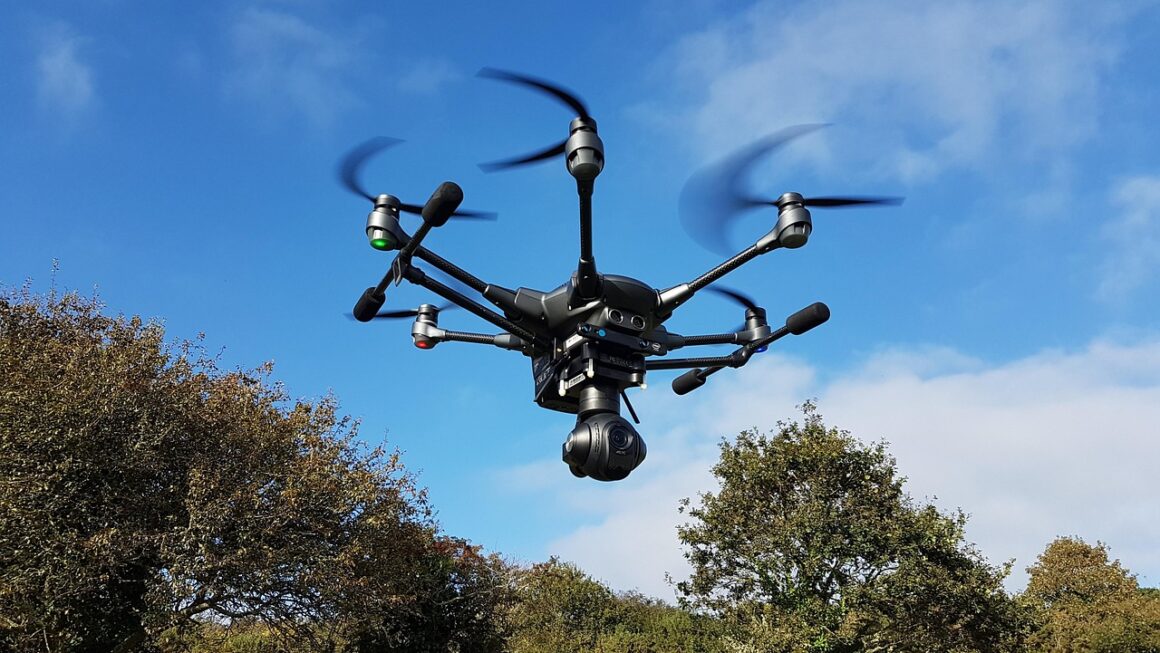Harnessing the power of Artificial Intelligence (AI) to automate workflows is no longer a futuristic concept, but a present-day reality transforming businesses across industries. From streamlining mundane tasks to enhancing complex decision-making, AI workflow automation offers unparalleled opportunities to boost efficiency, reduce costs, and drive innovation. This comprehensive guide delves into the intricacies of AI workflow automation, exploring its benefits, practical applications, and how to implement it effectively within your organization.
What is AI Workflow Automation?
Defining AI Workflow Automation
AI workflow automation is the process of using artificial intelligence technologies like machine learning, natural language processing (NLP), and computer vision to automate repetitive, manual, and time-consuming tasks within business workflows. It goes beyond traditional automation by incorporating AI’s ability to learn, adapt, and make intelligent decisions, leading to more dynamic and efficient processes. Unlike rigid rule-based systems, AI can handle unstructured data, learn from patterns, and optimize processes in real-time.
How it Differs from Traditional Automation
Traditional automation relies on predefined rules and scripts to execute tasks. This approach is effective for structured and predictable processes but struggles with variability and exceptions. AI workflow automation, on the other hand, leverages AI algorithms to understand context, analyze data, and make intelligent decisions without explicit programming for every scenario.
- Adaptability: AI systems learn from data and adjust their behavior over time, while traditional automation is static.
- Decision-Making: AI can make complex decisions based on data analysis, whereas traditional systems follow predetermined rules.
- Data Handling: AI can process unstructured data (images, text, audio), unlike traditional systems which primarily handle structured data.
- Error Reduction: AI-powered systems can identify and correct errors more effectively than rule-based systems.
Examples of AI Workflow Automation
- Automated Invoice Processing: AI can extract data from invoices, validate information against purchase orders, and automatically route invoices for approval. This reduces manual data entry and minimizes errors.
- Customer Service Chatbots: AI-powered chatbots can handle routine customer inquiries, provide instant support, and escalate complex issues to human agents, improving customer satisfaction and reducing support costs.
- Recruitment Process Automation: AI can screen resumes, identify qualified candidates, and even conduct initial interviews, freeing up recruiters to focus on more strategic tasks.
- Predictive Maintenance: AI can analyze sensor data from equipment to predict potential failures and schedule maintenance proactively, minimizing downtime and reducing maintenance costs.
Benefits of AI Workflow Automation
Increased Efficiency and Productivity
AI automates repetitive tasks, freeing up employees to focus on higher-value activities that require creativity, critical thinking, and emotional intelligence. This leads to increased overall productivity and faster turnaround times. Studies show that implementing AI can improve workflow efficiency by up to 40%.
- Reduces manual effort: Automating tasks such as data entry, report generation, and document processing significantly reduces the burden on employees.
- Accelerates process execution: AI can perform tasks much faster than humans, resulting in quicker completion times.
- Improves accuracy: AI algorithms can minimize errors and ensure data consistency.
Cost Reduction and Improved ROI
By automating tasks and improving efficiency, AI workflow automation can significantly reduce operational costs. This includes savings on labor, reduced error rates, and optimized resource utilization.
- Lower labor costs: Automating tasks reduces the need for manual labor, resulting in significant cost savings.
- Reduced error rates: AI algorithms are less prone to errors than humans, leading to reduced costs associated with fixing mistakes.
- Optimized resource allocation: AI can analyze data to identify areas where resources can be allocated more efficiently.
Enhanced Customer Experience
AI can personalize customer interactions, provide faster responses, and resolve issues more efficiently, leading to increased customer satisfaction and loyalty.
- Personalized experiences: AI can analyze customer data to provide personalized recommendations and tailored services.
- Faster response times: AI-powered chatbots and virtual assistants can provide instant support, reducing wait times for customers.
- Improved issue resolution: AI can analyze customer issues and provide solutions more efficiently.
Improved Decision-Making
AI provides insights and analytics that help organizations make more informed decisions. AI-powered tools can analyze large datasets, identify patterns, and predict future outcomes, enabling better strategic planning and resource allocation.
- Data-driven insights: AI can analyze vast amounts of data to identify trends and patterns that humans might miss.
- Predictive analytics: AI can predict future outcomes, enabling organizations to make proactive decisions.
- Improved risk management: AI can identify potential risks and help organizations develop mitigation strategies.
Implementing AI Workflow Automation: A Step-by-Step Guide
Identifying Automation Opportunities
The first step is to identify tasks and processes that are ripe for automation. Look for repetitive, manual, and time-consuming tasks that consume significant resources. These are the areas where AI can have the biggest impact.
- Analyze current workflows: Map out existing processes to identify bottlenecks and inefficiencies.
- Identify repetitive tasks: Look for tasks that are performed frequently and require minimal cognitive effort.
- Assess data availability: Ensure that you have enough data to train AI models effectively.
Selecting the Right AI Technologies
Choose the AI technologies that best fit your specific needs. Common AI technologies used in workflow automation include machine learning, natural language processing (NLP), computer vision, and robotic process automation (RPA).
- Machine Learning (ML): Used for predictive analytics, classification, and clustering.
- Natural Language Processing (NLP): Used for understanding and processing human language, such as chatbots and sentiment analysis.
- Computer Vision: Used for analyzing images and videos, such as object recognition and image classification.
- Robotic Process Automation (RPA): Used for automating rule-based tasks, such as data entry and document processing.
Building or Buying AI Solutions
You have the option to build AI solutions in-house or purchase pre-built solutions from vendors. Building requires significant expertise and resources, while buying offers faster deployment and lower upfront costs.
- Build: Develop AI solutions from scratch using internal resources. This offers greater customization but requires significant expertise.
- Buy: Purchase pre-built AI solutions from vendors. This offers faster deployment and lower upfront costs but may offer less customization.
- Hybrid: Combine building and buying, using pre-built solutions for common tasks and developing custom solutions for specific needs.
Training and Deployment
Once you have selected your AI technologies and solutions, you need to train the AI models and deploy them into your workflows. This involves feeding the AI models with data and monitoring their performance to ensure they are working correctly.
- Data Preparation: Clean and prepare the data that will be used to train the AI models.
- Model Training: Train the AI models using the prepared data.
- Testing and Validation: Test the AI models to ensure they are performing as expected.
- Deployment: Deploy the AI models into your workflows.
Monitoring and Optimization
After deployment, it’s crucial to continuously monitor the performance of your AI-powered workflows and optimize them as needed. This involves tracking key metrics, identifying areas for improvement, and retraining the AI models with new data.
- Key Performance Indicators (KPIs): Define metrics to track the performance of your AI workflows.
- Performance Monitoring: Continuously monitor the performance of your AI workflows.
- Optimization: Identify areas for improvement and optimize the AI models as needed.
- Retraining: Retrain the AI models with new data to improve their accuracy and performance.
Real-World Applications of AI Workflow Automation
Healthcare
AI is transforming healthcare by automating tasks such as patient diagnosis, drug discovery, and personalized treatment plans. For example, AI can analyze medical images to detect diseases early and provide doctors with more accurate diagnoses.
- Automated Diagnosis: AI can analyze medical images and patient data to detect diseases early and improve diagnostic accuracy.
- Drug Discovery: AI can accelerate the drug discovery process by identifying potential drug candidates and predicting their effectiveness.
- Personalized Treatment: AI can personalize treatment plans based on individual patient characteristics and preferences.
Finance
In the finance industry, AI is used for fraud detection, risk management, and customer service. AI algorithms can analyze financial transactions in real-time to identify fraudulent activity and prevent financial losses.
- Fraud Detection: AI can analyze financial transactions in real-time to identify fraudulent activity and prevent financial losses.
- Risk Management: AI can assess risks and predict potential losses, helping financial institutions make better decisions.
- Customer Service: AI-powered chatbots can provide instant customer support and resolve issues more efficiently.
Manufacturing
AI is revolutionizing manufacturing by automating tasks such as quality control, predictive maintenance, and supply chain optimization. AI can analyze data from sensors to predict potential equipment failures and schedule maintenance proactively.
- Quality Control: AI can analyze images and sensor data to detect defects and ensure product quality.
- Predictive Maintenance: AI can analyze sensor data to predict potential equipment failures and schedule maintenance proactively.
- Supply Chain Optimization: AI can optimize supply chain operations by predicting demand and managing inventory more efficiently.
Retail
AI is transforming retail by personalizing customer experiences, optimizing pricing, and managing inventory more efficiently. AI can analyze customer data to provide personalized recommendations and improve customer loyalty.
- Personalized Recommendations: AI can analyze customer data to provide personalized product recommendations and improve customer loyalty.
- Pricing Optimization: AI can optimize pricing strategies by analyzing market trends and customer behavior.
- Inventory Management: AI can optimize inventory levels by predicting demand and managing supply chains more efficiently.
Conclusion
AI workflow automation is a powerful tool that can help organizations improve efficiency, reduce costs, and enhance customer experiences. By understanding the benefits of AI and following a structured implementation process, businesses can leverage AI to automate their workflows and gain a competitive advantage. The key is to start with clearly defined goals, choose the right AI technologies, and continuously monitor and optimize your AI-powered workflows. Embracing AI workflow automation is not just about adopting new technology; it’s about transforming how your organization operates and achieving new levels of success.




